25 Dec 2013
Stopping The Flow Of Dangerous Synthetic Drugs
The chemical make-up of synthetic drugs are in a continuous state of flux, means their effects aren’t predictable and correct emergency treatment can be difficult. Those in law enforcement are often handcuffed in terms of prosecution because these substances can be modified to slip through current drug laws. Now there’s a group that’s trying to tighten the net.
The National Alliance for Model State Drug Laws (NAMSDL) want to stop the proliferation of synthetic drugs, which are the second most commonly used illicit drug among young people, according to a 2012 Monitoring the Future survey. One out of every nine high school seniors reported having used synthetic drugs within the past year.
How And Why The Recipes Of Synthetic Drugs Keeps Changing
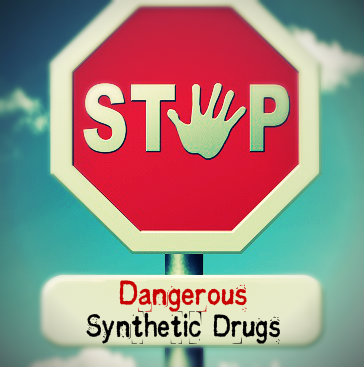 Synthetic drugs can be either man-made marijuana (cannabinoids) or chemicals related to amphetamines (cathinones). The synthetic marijuana, often sold under the names K2 or Spice, are plant materials resembling potpourri that are sprayed with chemicals that mimic THC, the psychoactive agent in marijuana. But the recipe keeps changing in order to evade prosecution.
Synthetic drugs can be either man-made marijuana (cannabinoids) or chemicals related to amphetamines (cathinones). The synthetic marijuana, often sold under the names K2 or Spice, are plant materials resembling potpourri that are sprayed with chemicals that mimic THC, the psychoactive agent in marijuana. But the recipe keeps changing in order to evade prosecution.
In 2012 the federal government made synthetic drugs, also known as novel psychoactive drugs, illegal. But the law defines the drugs narrowly. Once those who make the drugs tweak the recipe, the new compound no longer fits within the narrow definition of synthetic drugs. To further complicate the matter, the substances are often sold as bath salts, incense or plant food with a label saying they’re not intended for human consumption.
How The Spread Of Synthetic Drugs Is Trying To Be Halted
What NAMSDL wants to do is work with state lawmakers to make classes of substances illegal, rather than specific chemical combinations. The laws could give examples of what some of those substances might look like, but would leave room so that potential new chemical compounds would be illegal. That would certainly speed things up for law enforcement that now must often wait a year and a half before each new synthetic drug compound is banned.
NAMSDL also wants to enhance communication between those who see the changing drug landscape firsthand. The Drug Enforcement Agency currently collects and disseminates drug information to concerned parties, but it’s hospital emergency rooms, poison control centers and law enforcement that sees what’s going on in real time. This would help keep the information on synthetic substances truly up-to-date
Synthetic Drug Education And Prevention
NAMSDL is working directly with the Office of National Drug Control Policy and others to create an effective education and prevention campaign aimed at informing moms, dads, emergency room staff and school administrators about what these drugs are and what they do. Education, information flow and improved legislation represent a 360 degree effort on closing the gaps and halting the flow of these dangerous drugs.
Read More About Synthetic Drugs Causing More Emergency Room Visits Than Real Drugs
According to the National Institute on Drug Abuse, synthetic marijuana is now second to only cannabis in terms of popularity. Users can achieve similar effects to natural marijuana, but the risks are multiplied.
A stroke and smoking spice study by University of Southern Florida researchers involved two young and healthy siblings that experienced acute ischemic strokes soon after smoking spice, also known as K2. Ischemic strokes occur when an artery to the brain becomes blocked.
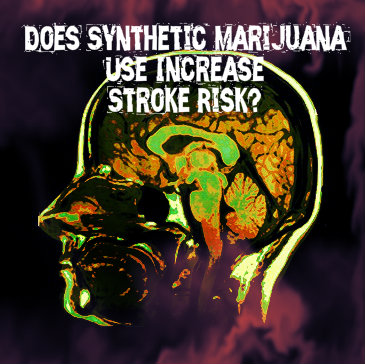 Dangerous Side Effects Of Synthetic Pot
Dangerous Side Effects Of Synthetic Pot
- Stroke
- Seizures
- Heart arrhythmia
- Heart attacks
- Psychosis
- Hallucinations
Senior author W. Scott Burgin, M.D., professor of neurology at the USF Health Morsani College of Medicine and director of the Comprehensive Stroke Center at Tampa General Hospital, said that there was some concern that the siblings could share a genetic proclivity to stroke. However, the physicians checked carefully for such a situation and did not find any genetic clues.
The researchers say the siblings experienced heart-derived strokes and that the brothers had no heart-related health problems, and that more investigation is needed to understand the potential connection between synthetic marijuana and stroke.
Properties Of Synthetic Marijuana
Synthetic marijuana is a mixture of herbal plant materials resembling potpourri that are coated with a chemical mixture intended to mimic the effects of cannabis. The mixture can be significantly more potent than cannabis because the psychoactive ingredient binds directly to the cannabinoid receptors in the brain.
The dangers of using synthetic marijuana also lies in its composition, which includes chemicals that have not been tested. Additionally, because the drug is not regulated, there is no consistency in the types or amounts of chemicals used. Dr. Burgin explains that consumers that purchase synthetic marijuana are taking a gamble with their health and their brain.
In Florida, any activities connected to selling, delivering or possession of synthetic marijuana is a third-degree felony. It’s difficult to purchase the drug at a brick-and-mortar establishment, but the drug is still available for Internet purchase.
The authors of the study urge physicians to be more aware of the potential problems associated with synthetic marijuana. When an otherwise healthy young person is treated for a stroke or heart attack, the patient should be asked about drug use. Patients will not generally volunteer drug use information and synthetic marijuana does not appear in a drug test.
Meanwhile, an editorial appearing alongside the USF findings cautions physicians that these case studies represent only two instances of stroke associated with synthetic marijuana use, even as the drug is becoming more widely used.
However, John C.M. Brust, M.D., professor of clinical neurology at Columbia University College of Physicians and Surgeons, notes that because marijuana is tied to ischemic stroke, and synthetic marijuana tends to only amplify the risks seen with natural cannabis, it is likely that strokes will be seen more often in emergency rooms.
Read More About The Problems And Dangers Of Synthetic Marijuana
A new drug that has devastating consequences for its users may have finally been confirmed to have made it into the U.S. The drug is called Krokodil, and it first appeared in Russia as a cheap, homemade substitute for heroin. The name, which means crocodile in Russian, refers to the scaly sores that appear almost immediately after using this drug. The sores begin under the skin and can be so bad that the drug has been described as flesh-eating. The result is horrific and can lead to scarring, amputation, and even death.
Krokodil Beginnings In Russia
 Homemade injectable opioid drugs are nothing new in Russia. Resourceful people there have been creating and using their own drugs to get high for decades. In the 1990s, the heroin trade from Afghanistan increased and drug users did not need to make their own substitutes. Heroin addiction became a serious and widespread problem in the country.
Homemade injectable opioid drugs are nothing new in Russia. Resourceful people there have been creating and using their own drugs to get high for decades. In the 1990s, the heroin trade from Afghanistan increased and drug users did not need to make their own substitutes. Heroin addiction became a serious and widespread problem in the country.
Over the last few years, the Russian government has targeted illegal opium sales to try to solve the problem of heroin addiction. As sources of heroin dwindled and the product became more expensive, the practice of making heroin substitutes at home came back into favor. Krokodil is easily made from codeine, a prescription opioid, and other household chemicals.
Krokodil gives the user a high similar to heroin, but with even worse side effects. The green and black colored sores and ulcers begin to appear soon after the first use, and get worse as use of the drug continues. The drug, with the chemical name desmorphine, as well as the other chemicals that go into making it, tend to clump up and stay inside blood vessels all over the body. The clumps lead to infections and sores that spread and worsen.
Disputed Krokodil Cases In The U.S.
Experts in the field of illegal drugs have long feared that Krokodil would eventually show up in the U.S. Several disputed cases have been reported, including a doctor in the Chicago area who is convinced he treated two young women with the sores caused by Krokodil use. Cases in California and other states were also unconfirmed.
Reputable Case Of Krokodil Use In The U.S.
Now, it would seem that the worst fears of some have been vindicated. Two doctors working at St. Mary’s Health Center outside of St. Louis, Missouri, have published their findings from treating a victim of Krokodil use. They treated the 30-year-old man in December 2012. He had sores all over his legs. His skin was rotting away in places, and he had lost a finger on one hand to the infection. He told the doctors that he had been injecting himself with a synthetic heroin substitute that he made using codeine, gasoline, and other household chemicals. The admission, along with the sores, made a strong case that the doctors did treat a young man who had been using this scary new form of heroin.
Krokodile – Possible Future U.S. Epidemic?
If the doctors are right and Krokodil is now being used in the U.S., the implications are very serious. If drug users addicted to heroin and other opioids learn how to make this drug and can do so inexpensively, it could represent a new epidemic, much like what has been seen in Russia. The disfiguring effects of using Krokodil, as well as the addictive nature of the drug, mean that many people will suffer, and even die from using it. The Drug Enforcement Agency has yet to confirm the presence of Krokodil in the U.S., but with reports coming in from emergency rooms across the country, that confirmation does not seem to be far off.
Read More About Krokodil Claiming U.S. Victims
17 Oct 2013
You May Think It’s Molly, But It May Not Be
Hospitals face a difficult problem whenever someone comes in to be treated for a Molly overdose. The patient may believe they’ve taken a form of ecstasy, but there is no way to know what the person actually swallowed. There is no “Truth in Labeling Law” to govern illegal drugs, and many think they’ve been using Molly when they’ve really been taking some other highly dangerous substance.
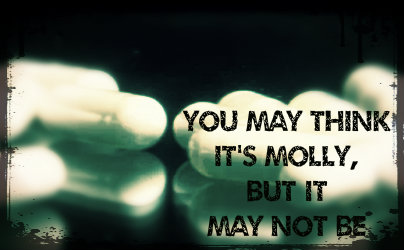
Courtesy of: www.ktsm.com
Molly is the street name for the synthetic drug MDMA. It’s called Molly because of the powder or capsule form that it comes in, as opposed to tabs, and the presumption that the “molecular,” or Molly for short, form is more pure. Synthetic drugs are also sometimes referred to as designer drugs. They are often compounds designed to mimic the effects of traditional drugs like marijuana, LSD or ecstasy, among others. Synthetic marijuana, for example, is sold as K2 or Spice.
Mislabeled And Dangerous Synthetic Designer Drugs
The problem is that you don’t know the person who designed your Molly. The Drug Enforcement Agency regularly tests the drugs it obtains through seizures. Those tests often reveal that pills are mislabeled.
Experts often find methylone in the pills, which is a key component in bath salts, another synthetic drug famous for being unpredictable and causing serious health side effects. In 2012 a man was arrested for importing methylone from China and then selling it to someone as Molly. That person died after using the drug.
Dangerous Side-Effects Of Molly
Molly is a popular drug for young people attending raves, dance clubs and concerts. The drug enhances positive emotions and feelings of bonding with others. However, Molly also increases a person’s heart rate and raises their body temperature, sometimes to extremes. One young man died with a body temperature of 109 after taking Molly. The risks of dehydration are so well known that special booths are often set up at events where Molly is expected to be used.
Symptoms commonly seen in hospitals include agitation, seizures, soaring fever and increased heartbeat. Since there is no way to know for certain what the young person actually ingested, the best hospital staff can do is to manage symptoms while they wait for the effects of the drug to wear off. Hardly reassuring.
Dying After Taking Molly
Over Labor Day weekend 2013 several young people died after taking Molly at various concert venues, with one multi-day concert in New York was shut down due to deaths. Nevertheless, rappers and rock stars continue to sing about the beauties of Molly. And young people continue to swallow whatever they are being told by their idols.
To Read More About Molly’s Dangerous Side-effects On Teens – Click Here
24 Sep 2013
Do Teens Know the Truth About Molly?
Who is Molly? Molly is the new name for the decades-old drug ecstasy, the drug that was responsible for three deaths and four people being hospitalized in critical condition over this past Labor Day weekend.
Description Of Molly
Molly is a synthetic, or man-made, drug. It first showed up on the streets in the 1980s as ecstasy. At the time it was called a club drug because young people enjoyed taking it when they went dancing, attended concerts or large parties. Today it’s sold in powder form, usually in capsule form but also sold as pills or tablets, with “Molly” connoting molecular purity.
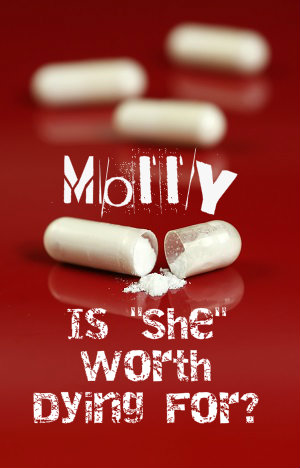 The pills are brightly colored and sometimes emblazoned with cartoonish images. Officially the drug is known as MDMA, which stands for 3,4-Methylenedioxymethamphetamine. If you saw a few words in there you thought you recognized like amphetamine and meth you were right. The drug is a stimulant, or amphetamine, resembling methamphetamine in the way it increases heart rate and stimulation while providing feelings of euphoria.
The pills are brightly colored and sometimes emblazoned with cartoonish images. Officially the drug is known as MDMA, which stands for 3,4-Methylenedioxymethamphetamine. If you saw a few words in there you thought you recognized like amphetamine and meth you were right. The drug is a stimulant, or amphetamine, resembling methamphetamine in the way it increases heart rate and stimulation while providing feelings of euphoria.
MDMA is a concoction combining a stimulant with an empathy-boosting chemical plus a psychedelic. Kids like to take Molly at large group events because the drug makes them feel more energized, less inhibited and closer to those around them. There’s also a sensation of heightened alertness.
Molly’s Risks
There’s also a down-side as it can lead to blurry vision, racing blood pressure and heartbeat and muscle cramps. Sometimes the person’s insides are so revved up that they develop hyperthermia. Long hours of dancing and pressing up against people in a crowd make heat stroke likely. Increased heart rate can easily become an arrhythmia or erratic heartbeat, and seizures have also been known to occur.
MDMA may ratchet up energy and perception but it often pulls down the user’s emotions, leaving them feeling depressed, sad and anxious. Problems with memory can result and these difficulties sometimes last up to a week or more. When a young person decides to mix MDMA with alcohol they increase the sedative effects as well as increasing their risk of becoming dehydrated.
The risk of dehydration with use of MDMA is real, so lots of users try to compensate by drinking more water. However, since it causes the body to retain fluids, the combination of MDMA and water can quickly create an imbalance of electrolytes. Kids who choose to combine Molly with caffeine increase their risk of dehydration while also dangerously increasing body temperature.
Impure MDMA
Called Molly because of supposed molecular purity, the drug is no more pure than any other illicit drug. In fact, MDMA is often cut or completely replaced with another substance known as PMA which produces similar effects. Some deaths attributed to MDMA have actually been caused by PMA. More than that, street drugs are made with no regulating oversight, meaning every batch is unique and users can’t expect one tablet to affect them precisely the same as the last. Many high profile deaths come about because a celebrity is using street drugs in a new city and expecting them to be exactly like those they used in another city — it just doesn’t happen that way.
Celebrity Push Of Molly
Ecstasy, MDMA, Molly — whatever you call it, the drug is enjoying renewed popularity spurred on by pop singers like Madonna, Kanye West and Miley Cyrus. The Monitoring the Future studies conducted by the National Institute on Drug Addiction report that MDMA is experiencing a resurgence among 20-somethings and even high schoolers.
Strong Opportunity For Parents And Teachers
The recent tragic deaths at the Electronic Music Festival in New York provide an opportunity for parents and teachers to talk with teens about the realities of using drugs like MDMA. No matter what pop singers or friends might say, no experience is worth dying for.
Of all of the recent designer drugs that have hit the market, few have attracted the level of attention as bath salts. The drugs were initially blamed for the zombie-like, cannibalistic attack in Florida last year, but it was later found that marijuana was the only drug in the attacker’s system. Regardless, the addictiveness of bath salts and the risks associated with their use have become more well-known, leading to a U.S. ban of many of the drugs. Their potency, however, has meant that many users still take them and expose themselves to these risks. They might not turn users into cannibals, but new research suggests that the drugs are actually much more addictive than methamphetamines.
What Are Bath Salts?
They definitely aren’t chemicals you use when you take a bath—they’re just marketed as such in order to make legal punishment more difficult to rain down on the producers. Bath salts are essentially stimulant drugs that have comparable effects to amphetamines and MDMA. In essence, there are several different types of bath salts, and they can be more accurately described as synthetic cathinone compounds—like the active substance in the drug khat. You can’t really know which chemicals are in the substance you’re taking.
There are many risks associated with the drug, with reports of chest pain, rapid heartbeat, aggressive behavior, hallucinations, delusions, paranoia and high blood pressure.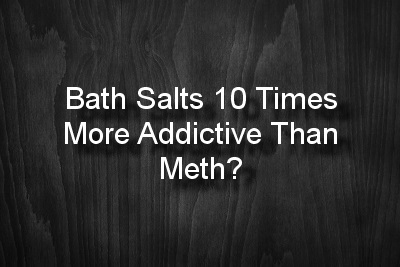 Studies on the substances are limited, however, because they’re relatively new, and it’s merely assumed that the long-term effects are comparable to those of methamphetamines because of the chemical similarities. In 2012, there were more than 2,600 calls to poison control centers about exposure to bath salts.
Studies on the substances are limited, however, because they’re relatively new, and it’s merely assumed that the long-term effects are comparable to those of methamphetamines because of the chemical similarities. In 2012, there were more than 2,600 calls to poison control centers about exposure to bath salts.
The Study
These issues (and the relative scarcity of studies addressing the drugs) led some researchers to look at one specific cathinone compound, 3, 4-methylenedioxypyrovalerone—or simply MDPV. The researchers used rats—which have similar neurological “reward” pathways to humans and are therefore useful for studying addiction—that had been trained to press a lever for a reward. They initially received food for their lever-presses, but the researchers had them hooked up to an intravenous infusion of drugs, which became activated for the study period. The rats received MDPV or methamphetamine, with the aim of investigating the differing effects of both drugs.
The Findings
The most shocking result from the research is the finding that the rats who were hooked up to the MDPV pressed the lever for a dose significantly more often than those who had methamphetamine. The researchers point out that the number of lever-presses is analogous to the amount of effort the rats are willing to put in to get a dose of the drug. The rats pressed the lever an average of 60 times to get access to meth, whereas for MDPV the number was 10 times higher, at an average of 600 presses. The results seem to show that bath salts are exponentially more addictive than methamphetamine, with some rats pressing the lever up to 3,000 times for a single dose.
Additionally, the researchers also looked at the repetitive behaviors that are common in humans who take bath salts. They found that the rats receiving higher doses of MDPV displayed many similar behaviors, such as excessive licking, skin-picking and teeth-grinding. The researchers reported that some of the MDPV-dosed rats were so intent on licking the transparent walls of their cages that they were unable to interrupt them.
Conclusion
These findings serve as evidence that bath salts could be notably more addictive than meth, according to the researchers, and they concluded that the potency of the drug means that it’s likely to stick around despite its now illegal status. In other words, the study suggests that bath salts are so addictive that they may join the ranks of commonly abused illegal drugs, rather than being replaced by another temporarily legal designer drug.
Of course, the major problem when it comes to bath salts is in the wide variety of substances and the fact that long-term studies are currently unavailable. The researchers are moving on to both of these areas for future studies and plan to investigate the long-term behavioral impacts of bath salt abuse and the different effects of the newly produced cathinone drugs. The story comes as a stark reminder that legality doesn’t equal safety when it comes to drugs—in fact, the changes made to their chemical structures in order to skirt existing legislation could make them even more dangerous. Bath salts are particularly susceptible to this, because there isn’t one “formula” for the drug—one batch could be drastically, fatally different from another and the user would have no way of knowing.
24 Jan 2013
Synthetic Marijuana – Problems And Dangers
Synthetic marijuana, also known as synthetic pot or synthetic cannabis, is the name given to a group of products made from a combination of natural plant material and any one of a number of different chemicals called synthetic cannabinoids. When they enter your brain, these chemicals produce an effect that closely mimics the effects of the natural cannabinoid in marijuana called tetrahydrocannabinol, or THC. In 2012, the U.S. government banned the production, sale and/or possession of the cannabinoids found in the most widely distributed forms of synthetic marijuana, and the U.S. Drug Enforcement Agency followed up this new legislation with a nationwide raid on distributors of these products.


